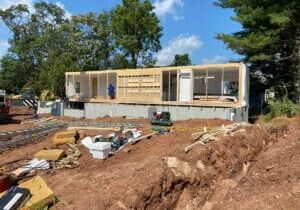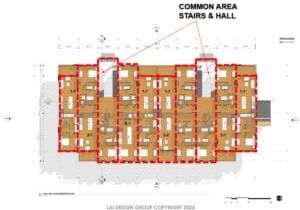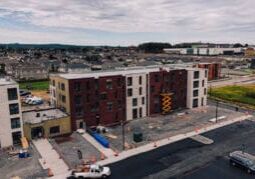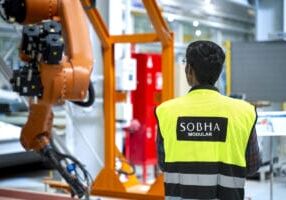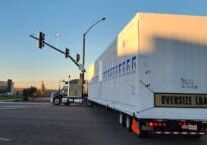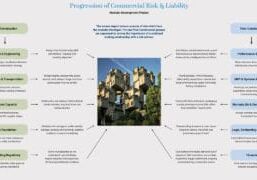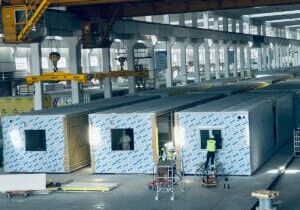The Function of HVAC Control Options
Most HVAC manufacturers provide optional protective controls for the HVAC units they produce. In the past, these controls were standard features installed on every unit, but market pressures toward cost reductions resulted in their removal as standard features/benefits in lieu of currently offering protective control as options.
The protective devices discussed in the following paragraphs are some of the usual controls available for light commercial applications.
A high pressure switch (HPS) and a low pressure switch (LPS) are protective devices for the compressor and refrigeration circuit. The high pressure switch monitors the system for an inoperative outdoor motor, and/or a dirty/restricted condenser (outdoor) coil. The low pressure switch monitors the refrigeration system for a loss of refrigerant charge, and may also be helpful in stopping the evaporator (indoor) coil from freezing up due to a dirty filter or low airflow over the coil. I say "may" because the low pressure switch cut-out setting could be set too low (15-20 lbs.) to be of any help. An evaporator coil could start to form ice at 30 lbs. low pressure charge.
If either one of these switches trip, the HVAC unit will shut down. The control needs to be reset to resume operation. Some switches are reset only from inside the HVAC unit. Others may be reset from the thermostat by turning the thermostat subbase "system" switch off, and back on again, or by doing the same to the HVAC unit's main panel circuit breaker.
A low ambient control (LAC) is useful when high internal heat loads dictate operation in the cooling mode during colder outdoor temperatures. Examples of this would be in an electrical equipment room, telecommunications building, a restaurant, or in loaded computer room applications. Extended operation of the compressor in the cooling mode when the outdoor temperature is less than 65?F can cause the indoor coil to freeze up. The low ambient control cycles the outdoor fan motor in response to refrigerant pressure and conditions. This keeps the system pressures from reaching the condition where icing would occur. Because the outdoor fan "cycles," it may appear to the end user that the condenser motor is defective. Although, this is not the case, an uninformed end user observing a low ambient control in operation could initiate a service call not covered by a first year labor warranty.
A time delay relay (TDR) protects the system against short cycling of the compressor from power interruption, and thermostat problems (due to vibrations, door slamming, or quick "putzing" adjustments by the user). The time delay relay is usually set for a 5 minute delay after the last time the compressor was energized. This device is useful in temporary mobile offices with mercury bulb thermo-stats. It protects the compressor contactor from chattering.
A dirty-filter switch is used to determine when the HVAC unit filter needs changing. It is a simple device that senses a pressure differential across the filter. From a dry set of contacts, it can turn on a light, or even cut the 24 volt power to the stat, shutting the unit off. The dirty-filter switch is manually reset from inside the HVAC unit when the filter is changed.
Start kits or start assist devices are used to help start a single phase compressor with tight bearings, or with a lower than (normal) 230 volt power supply to the compressor. A start kit includes a start capacitor and a potential relay specific to the single phase compressor in the application. A start assist device is all-in-one and is more popular with the service contractors. Some contractors feel a start assist does not provide the same boost as a start kit, but a start assist device usually gets the job done. A start kit is not meant to substitute for providing the proper voltage to the compressor.
If low main power voltage is your problem, first try to boost or improve the power supply to the building. If it can not be improved, a buck/boost transformer should be added to boost the power to the proper level required by the HVAC unit. Adding a buck/boost transformer requires monitoring of the buildings movement from one site to another. The first location may have low voltage, and the next location may not. The transformer boost of the next location may be above the operating range of the HVAC unit, and the buck/boost transformer will need to be removed from the electrical circuit.
Some units have compressor control circuit boards with a time delay relay for short cycling protection. They provide for one retry after the high or low pressure switch trips. This is to insure a condition was not a fluke before shutting the HVAC unit down. Most compressor control circuit boards can be reset inside the building by cycling either the thermostat's system switch or the HVAC unit's main panel circuit breaker to off, and then back on.
Phase monitors are used on three phase HVAC units to protect "scroll" compressors from running back-wards, and eventually seizing up. Running a scroll compressor backwards for more than an hour will pump the oil out of the bottom bearing. An hour is not a very long amount of time, especially when the set up crew does not know to turn off the HVAC unit prior to applying initial power.
Last is the brown out control. It prevents the HVAC unit from starting if the high voltage is not within the operating range of the system (usually 197-253 volts for 230 volt power supply). This control is very useful on mobile offices that continually change locations, because the available local voltage may vary from site to site. When the voltage is not within +10% of the selected voltage, the end user may only know their HVAC unit is not working, not that the voltage to the HVAC unit is too low or too high. While a brown out control would not prevent an HVAC service call, it does protect your asset from abuse. Payment for the HVAC service call then becomes the responsibility of the end user. Include such provision in your lease contracts.
Every optional control has a purpose, and therefore no one control can be recommended over the rest. From time to time, I am asked just which optional controls would be the best, and at the same time be somewhat cost effective. The "cost effective" part is fairly relative and philosophical. If a control can save the compressor from a burn out, a dirty filter from icing the coil, or a low voltage service call, how much is it worth? In other words, if a $ 50-0 control saves a $ 500-900 service call, can your company afford to put that control on every HVAC unit?
Mechanically speaking you should include all of the above items to protect the unit and yourself from problems. That wasn't the question, however. Financially, I would suggest a high and low pressure switch, a compressor control circuit board, and a two inch pleated filter. Then add the other devices as needed for the specific resolution desired. If your site continually has low voltage, add a brown out control. If your three phase HVAC units have scroll compressors, add a phase monitor. If most of your customers are telecommunication shelter users, add a low ambient control, etc.
Contact your mechanical engineer, licensed air conditioning contractor, or equipment supplier for assistance in selecting the correct optional control for your HVAC application.
More from Modular Advantage
AoRa Development Aims for New York’s First Triple Net Zero Building Using Modular Methods
More cities are providing funding for newer infrastructure projects as long as they meet sustainability requirements. This is how modular can fit the bill, thanks to its lower waste production.
Developers and Designers: Lessons Learned with Modular Design
Modular construction is attractive to many developers because sitework and module construction can occur simultaneously, shortening the schedule and reducing additional costs.
UTILE: Putting Modular Building on a Fast Track
In Quebec, UTILE is taking the lead in creating affordable modular buildings to help decrease the student housing shortage. During the process, the company discovered what it takes to make the transition to modular building a success.
Sobha Modular Teaches Developers How to Think Like Manufacturers
With its 2.7 million square foot factory in UAE, Sobha Modular is bringing both its high-end bathroom pods to high-end residences to Dubai while developing modular projects for the U.S. and Australia.
RoadMasters: Why Early Transport Planning is Make-or-Break in Modular Construction
In modular construction, transportation is often called the “missing link.” While it rarely stops a project outright, poor planning can trigger costly delays, rerouting, and budget overruns.
Navigating Risk in Commercial Real Estate and Modular Construction: Insights from a 44-Year Industry Veteran
Modular projects involve manufacturing, transportation, and on-site assembly. Developers must understand exactly what they are responsible for versus what they subcontract. Risk advisors should research the developer’s contractors, subcontractors, and design-build consultants—especially the modular manufacturer.
Art²Park – A Creative Application of Modular and Conventional Construction
Art²Park is more than a park building—it’s a demonstration of what modular construction can achieve when thoughtfully integrated with traditional materials. The use of shipping containers provided not only speed and sustainability benefits but also a powerful structural core that simplified and strengthened the rest of the building.
Building Smarter: A New Standard in Modular Construction Efficiency
Rising material prices, labour shortages, expensive financing and tightening environmental rules have made conventional construction slower, costlier, and more unpredictable. To keep projects on schedule and within budget, builders are increasingly turning to smarter industrialized methods.
Resia: Breaking All the Rules
Resia Manufacturing, a division of U.S.-based Resia, is now offering prefabricated bathroom and kitchen components to industry partners. Its hybrid fabrication facility produces more precise bathroom and kitchen components (modules) faster and at lower cost than traditional construction. Here’s how Resia Manufacturing does it.
How LINQ Modular Innovates to Bring Modular To The Market in the UAE and Beyond
LINQ Modular, with an office and three manufacturing facilities in Dubai, is a modular firm based in United Arab Emirates. The company is on a mission: to break open the housing and construction markets in the Gulf Cooperation Council (GCC) area with modular.

